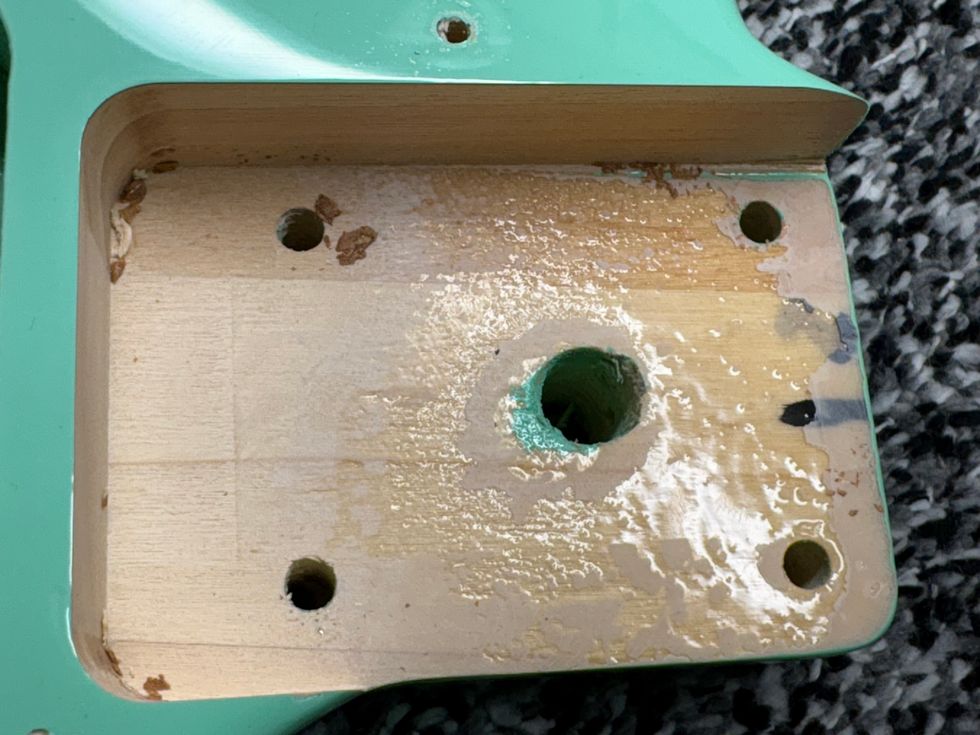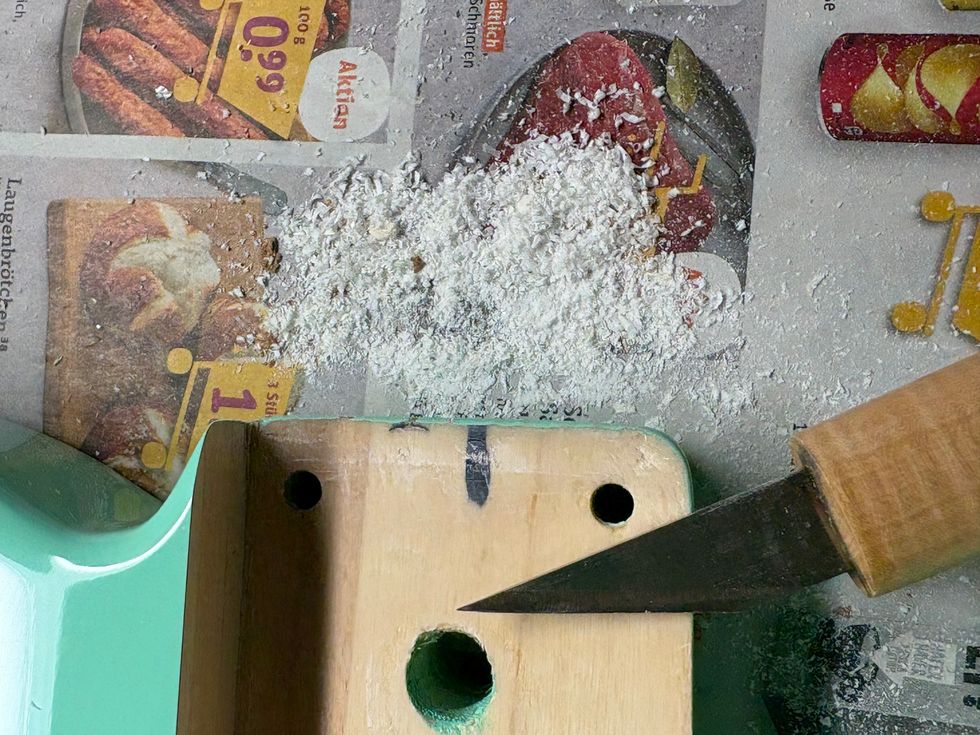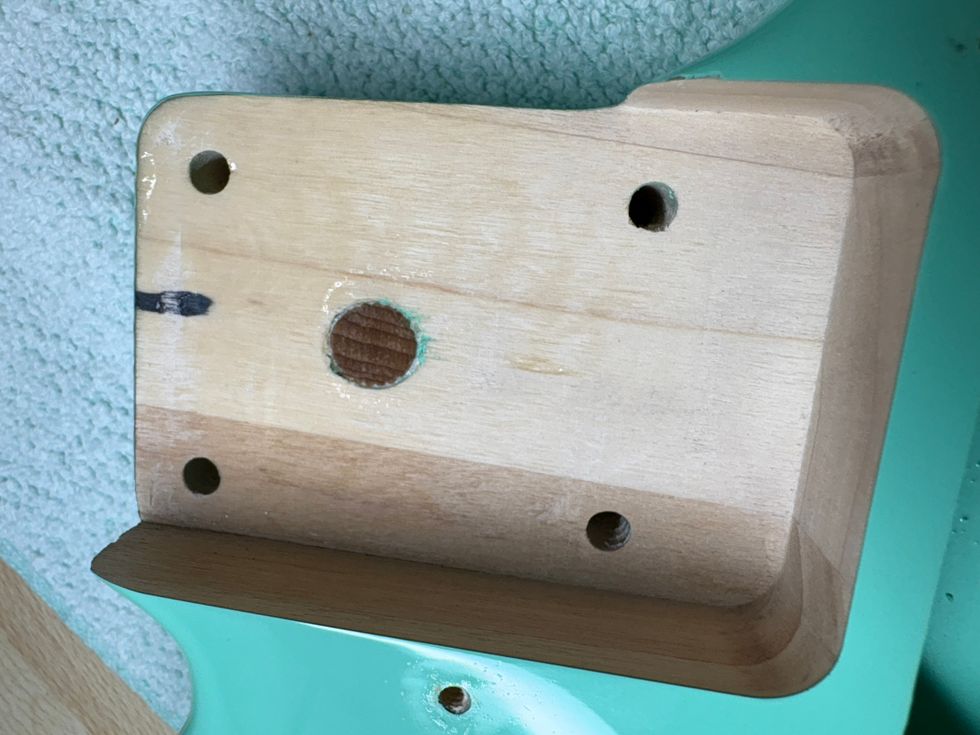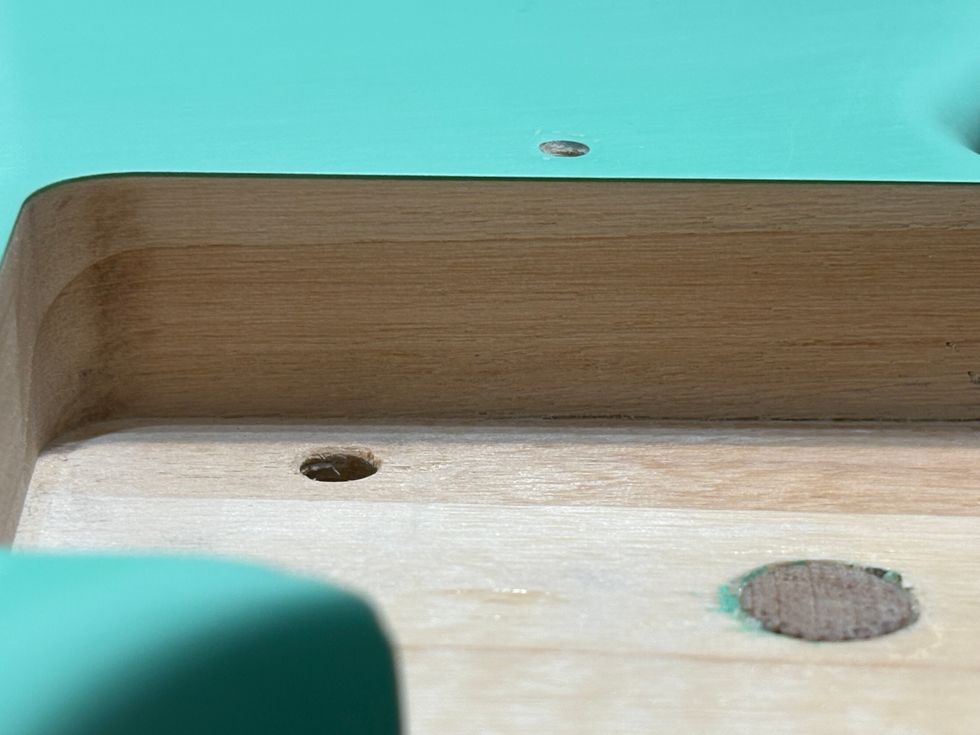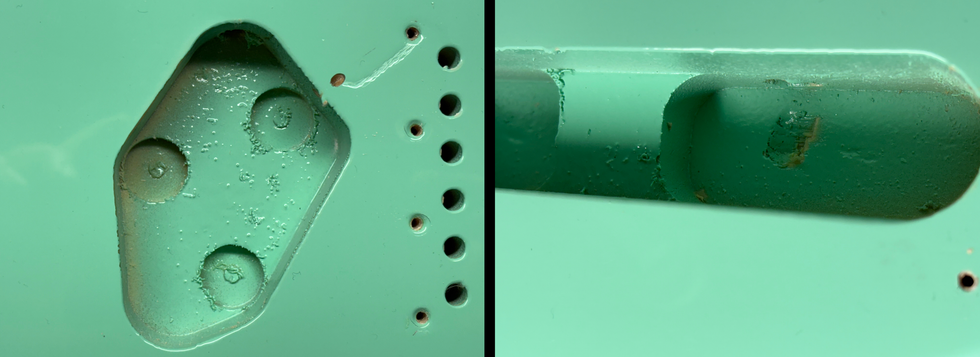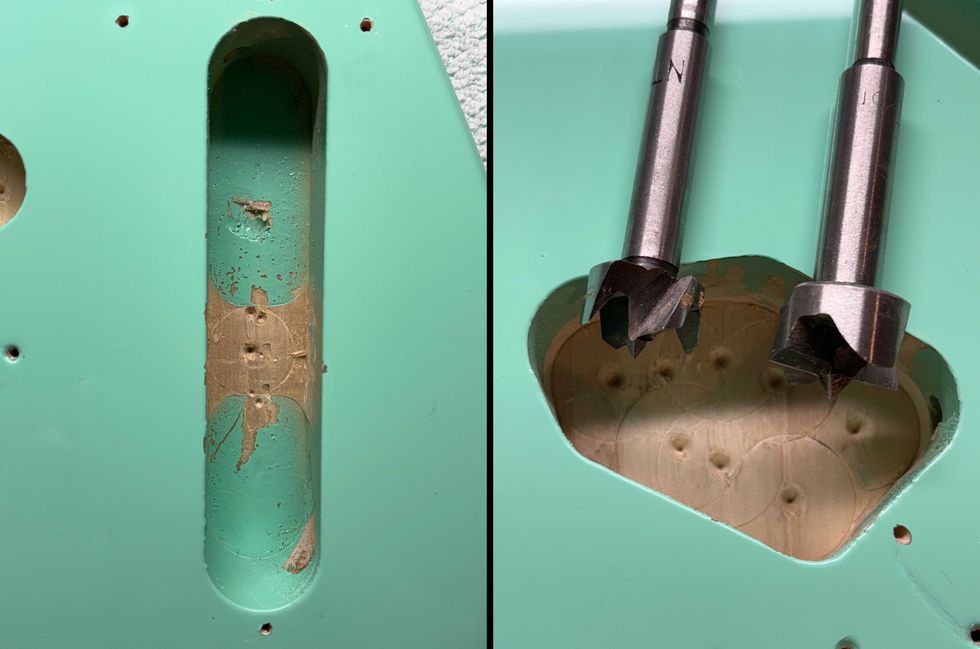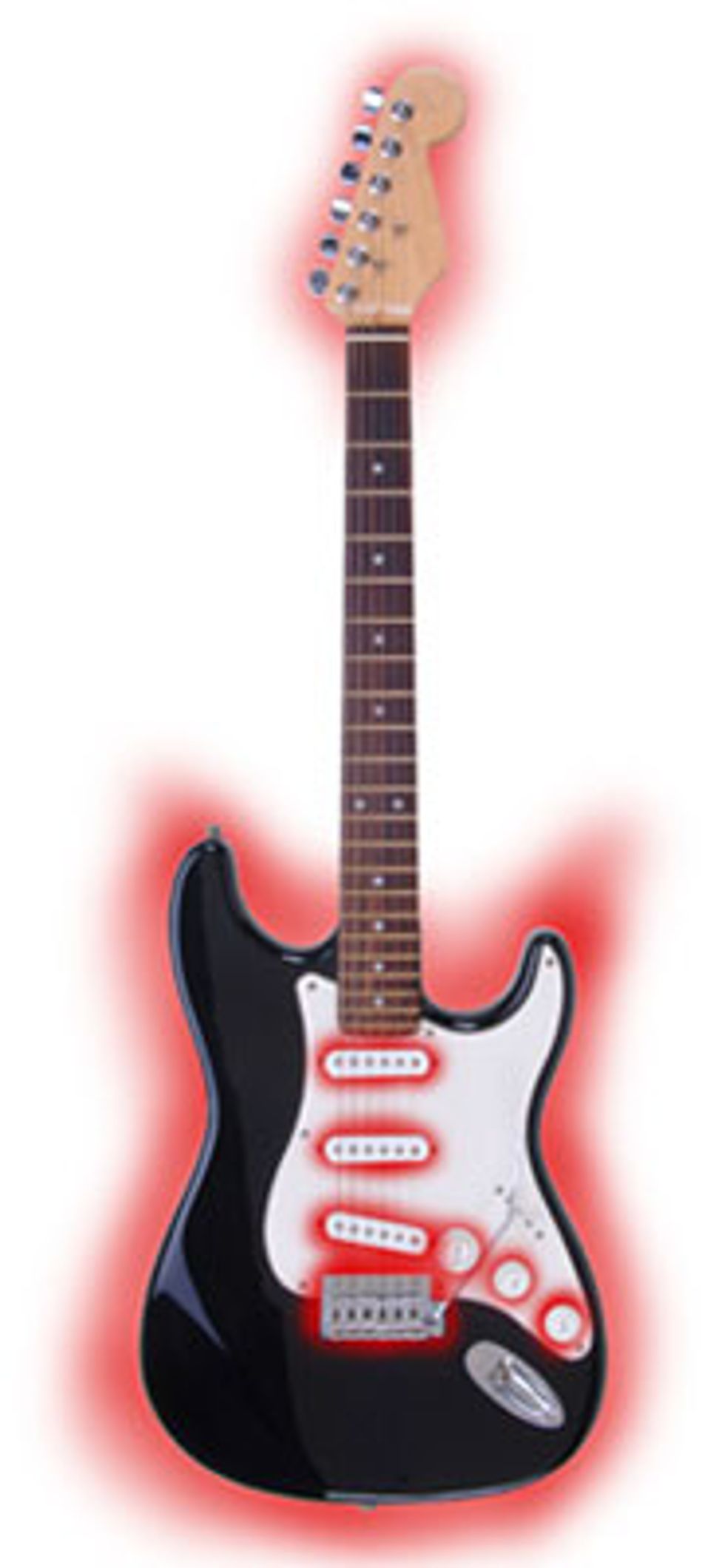
This underrated subject is often overlooked due to the misconception that the pickups make all of the difference; however, the pickup itself is only a small part of a much larger picture. Acoustic guitar players understand the importance of primary tone, and this concept of primary tone is what usually differentiates a "good" instrument from a "bad" one.
Simply put, primary tone is what is heard when playing an electric guitar unplugged. You can also feel primary tone in the way the guitar resonates. Depending on where you touch the guitar, you will feel different vibrations. Try touching the neck, the body, and the headstock while having a friend play your guitar to feel the differences.
When talking about vibration and resonance, we are actually talking about physics. There are guitars with very simple primary tone physics, like the Gibson Les Paul Junior, and some with very complex physics, like a Gibson Les Paul Standard. Although it may seem hard to believe, a guitar with one of the most complex physics is considered a very uncomplicated instrument - the Fender Telecaster! Thus, simple shapes and construction methods do not always equal simple primary tone physics.
There are many easy things you can do to enhance your guitar''s primary tone. These tips can help an average-sounding guitar sound good, and can make a good-sounding guitar sound great. The following tips are divided into two parts; the first part pertains to hardware and the second pertains to your electronics.
| Hardware |
1. Screws
Take care of all the screws on your guitar - they should be fastened very tightly for a better sound, but not to the point of breaking. Critical locations are the screws for the neck, the bridge, and the tuners. Check them regularly, as loose screws can also be the cause of rattling noises.
2. Trem and covers
If your guitar has a rear-routed tremolo cavity (think Stratocasters) that is covered with a plastic cover, get rid of it. It''s amazing how the overall sound of the guitar can change by simply taking off the cover. I know it sounds like voodoo, but give it a try and hear the difference for yourself.
If your guitar has a tremolo and you don''t use it, get it blocked professionally, preferably with wood. This will increase sustain and response dramatically.
3. Check your neck
Uninstall the neck and check the cavity; it should be absolutely free of any paint, dirt or other debris. Over the years, I have discovered lots of odd things in there: credit cards, paper, cardboard, the list goes on.
The bottom and the sides of the neck cavity should be absolutely clean and free of any paint. If it''s not, take a piece of sandpaper and rework the neck cavity until the wood is bare. If you feel that the neck does not fit the guitar''s cavity because the cavity is too wide or too low, take your guitar to an experienced luthier, who will "shim" it. Bad work at this critical point can ruin your guitar''s tone.
Check the corresponding part of the neck (the so-called "neck heel") that is attached to the neck cavity. You will often find stickers there - scrape them away. I also highly recommend sanding away all of the paint until you can see and feel the plain wood. You don''t need any paint there and a strong "wood to wood" connection will enhance the tone transfer dramatically. Bolt on the neck screws very tightly.
4. Let your guitar breathe
Take away the paint at any location that can''t be seen. A critical location is the surface underneath the bridge of a Tele or a Strat. Eric Johnson is rumored to have done this to his guitars. You can also take away the paint on the inside of the pickup cavities and the surface that is covered by the pickguard.
Fender is doing an interesting thing on the Eric Johnson Strat. They sand away the paint on top of the inertia bar (aka "tremolo block") that is attached to the bottom of the bridge plate for a better tone transfer. At first I thought it was just marketing hype, but some time later I gave it a try and the result was stunning - it was like freeing my guitar. Give it a try and see if you can hear a difference.
5. Materials make a difference
I''m sure you all know the discussion about the Les Paul aluminum stop tailpiece, so here are some things I''ve tried that make a big difference in tone:6. Add some mass
- Nut material:
This field is wide open to experimentation, but for me, nothing beats a good bone nut. Others prefer brass, wood, stainless steel, or plastic. You have to do some experimenting to see what you like best, but changing the nut material really makes a substantial difference in tone.- Bridge saddles:
For Telecasters, you have the choice between brass, steel and die cast, as well as exotic materials like aluminum and stainless steel. Brass is a classic material that was used on vintage Telecasters and will give you a well-balanced and twangy tone. Steel was used during the late ''60s and gives you more twang and spank than brass; this can help to activate a weak-sounding Tele. Die cast is the standard material today and it can really kill your tone - it is often weak and dull-sounding and should be replaced for a more open and transparent tone.
For Stratocasters you should consider replacing the standard brass saddles with the original sheet metal ones that were used during the ''50s and ''60s. On Les Pauls you can also often find die cast today. Brass is the historically correct material but steel also sounds very good.- Tuners:
Different tuners will make a difference in tone. Heavier tuners, like Grovers, will give you more sustain and a stronger, louder primary tone. Grovers are often found as replacements on older Les Pauls. The old Kluson tuners will make your Strat or Tele sound more open and transparent, and give it a faster attack.- Bridge:
This is important, especially on a Telecaster, because it interacts with the bottom plate of the bridge pickup. If your Tele sounds dull and lifeless or is missing some of that spank and twang, try a replacement bridge assembly made out of steel - sadly, today die cast is often the standard.- Stop tailpiece:
On old Les Paul guitars, stop tailpieces were made of aluminum - today it is often die cast. Replacing the stop tailpiece with an aluminum model makes a huge difference to your tone. Sometimes it sounds like having a different guitar. You have to try it to see if you like it or not, but for me, it''s one of the best guitar modifications ever.- Tremolo bar
The material of the inertia bar is crucial for a Stratocaster''s tone. Even here, die cast is the standard today, while steel is historically correct and sounds amazing. This mod is highly recommended for all Strats! In general, die cast tends to dampen your guitar''s primary tone and should be replaced with a more vibrant and resonant material for more efficient tone transfer.
Increasing the mass of your guitar will have a noticeable influence on the tone and can help get rid of certain dead spots on the fretboard. A classic trick is to clamp or screw some metal to the headstock of the guitar. I recommend checking out the Fat Finger clamp from Groove Tubes. The difference is subtle but audible, and it can''t hurt to try it.
7. String trees
Tonally, it makes a big difference to a Strat or Tele if you use string trees and where they are placed. Using string trees changes the pressure that the strings apply to the nut, and the higher the pressure, the stronger the tone. I use "butterfly" metal string trees for the D, G, B and high E strings and place them just far enough away from the nut so I can do behind-the-nut bends.
| Electronics |
To close this column, we''ll discuss your guitar''s electronics and some minor tweaks you can do to improve your tone.
1. Check the wiring of your guitar
You will often find a lot of poor-quality wiring inside your guitar. Get your hands on some high-quality wire and rewire the electronics. It is unbelievable what this can do to your tone.
2. Check your components
Dig in and check the pots, pickup selector switch, and output jack. If you find some poor-quality parts, get them replaced with quality parts. CTS Pots are always a good choice.
3. Check your strings
This seems like a simple one, and it is: restring your guitar with pure-nickel strings and hear details you have never heard before.
4. Upgrade your cable
Replace your instrument cables with a very high-quality cable (George L''s is a favorite of mine) and hear even more detail in your sound.
5. Pick your picks
This is another seemingly simple way to improve your tone, but something that a lot of guitarists pass over. Try different plectrum materials and decide which you like best. From my experience, I can say that the shell-colored celluloid picks have the best tone for me, with a percussive attack and a lot of twang.
As you can see, very small things can make a huge difference in your tone. Most of the things we discussed here are easy to do and not very expensive, so give them a try and listen to see if you like them. They can result in getting closer to your own signature tone. See you all next month; take care!
Dirk Wacker has been addicted to all kinds of guitars since the age of 5 and is fascinated by anything that has something to do with old Fender guitars and amps. He hates short scales and Telecaster neck pickups, but loves twang. In his spare time he plays country, rockabilly, surf and Nashville styles in several bands, works as a studio musician and writes for several guitar mags. He is also a hardcore DIY guy for guitars, amps and stompboxes and also runs an extensive webpage (singlecoil.com) about these things.















![Rig Rundown: Russian Circles’ Mike Sullivan [2025]](https://www.premierguitar.com/media-library/youtube.jpg?id=62303631&width=1245&height=700&quality=70&coordinates=0%2C0%2C0%2C0)



